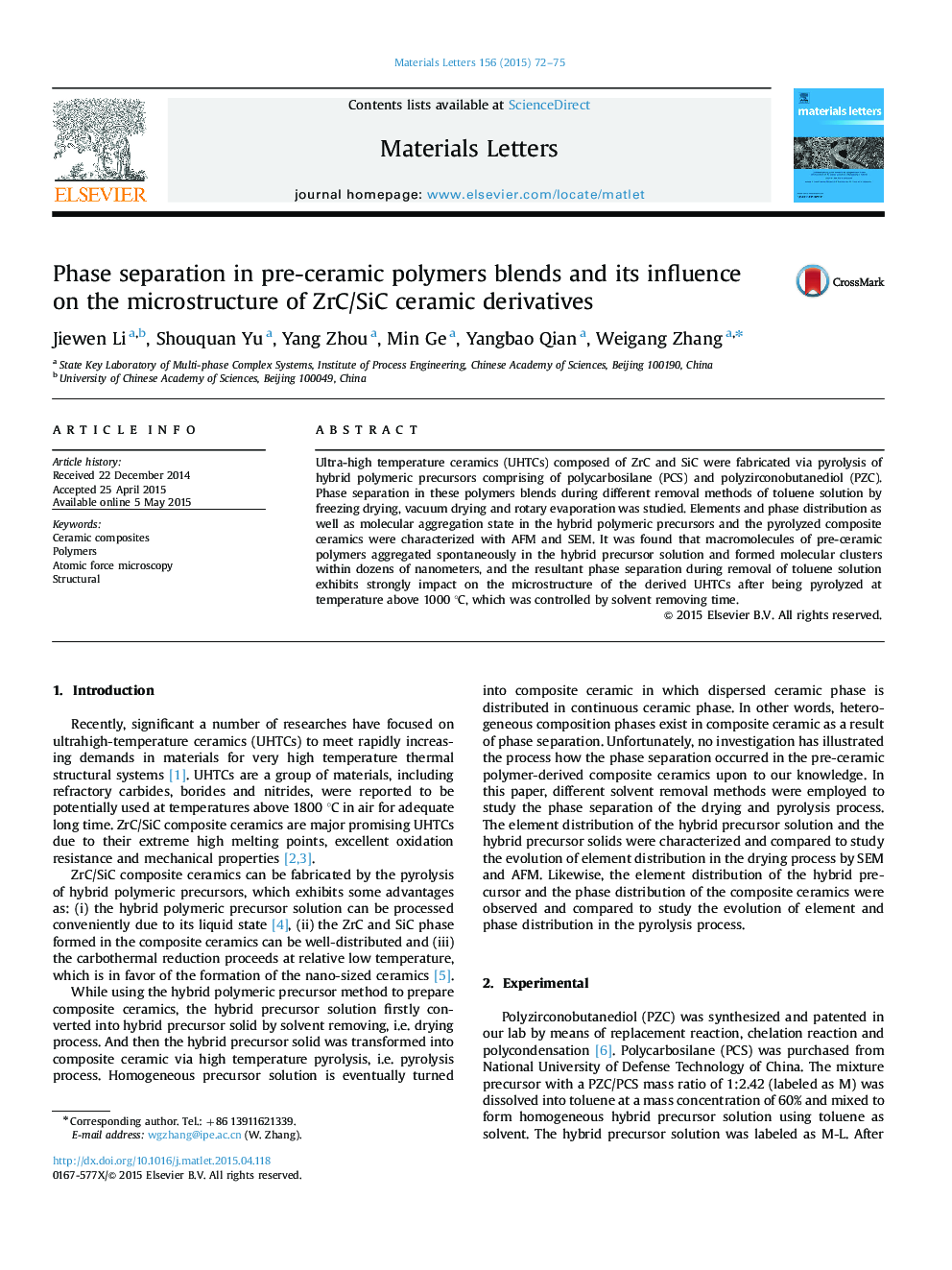| Article ID | Journal | Published Year | Pages | File Type |
|---|---|---|---|---|
| 1642458 | Materials Letters | 2015 | 4 Pages |
•Molecules of the pre-ceramic polymers aggregated spontaneously in the solution.•Molecules of the polymers formed clusters within dozens of nanometers.•Phase separation mainly occurred during the solution removal.•Different drying methods can adjust the microstructure of the final ceramics.
Ultra-high temperature ceramics (UHTCs) composed of ZrC and SiC were fabricated via pyrolysis of hybrid polymeric precursors comprising of polycarbosilane (PCS) and polyzirconobutanediol (PZC). Phase separation in these polymers blends during different removal methods of toluene solution by freezing drying, vacuum drying and rotary evaporation was studied. Elements and phase distribution as well as molecular aggregation state in the hybrid polymeric precursors and the pyrolyzed composite ceramics were characterized with AFM and SEM. It was found that macromolecules of pre-ceramic polymers aggregated spontaneously in the hybrid precursor solution and formed molecular clusters within dozens of nanometers, and the resultant phase separation during removal of toluene solution exhibits strongly impact on the microstructure of the derived UHTCs after being pyrolyzed at temperature above 1000 °C, which was controlled by solvent removing time.
